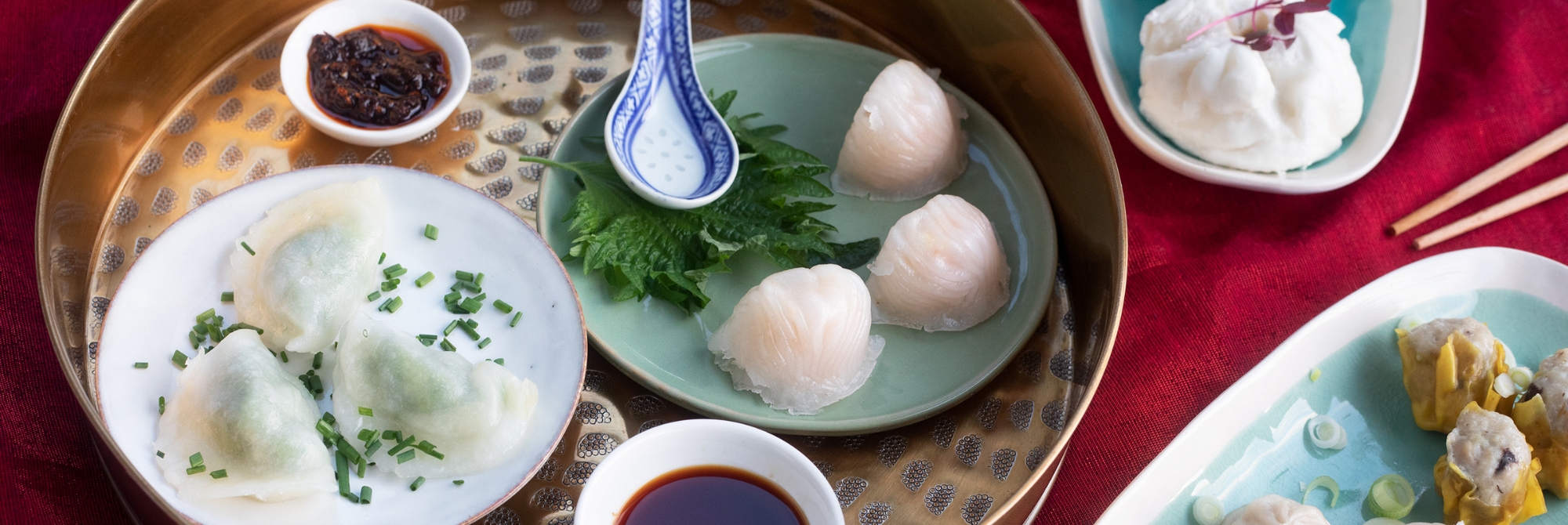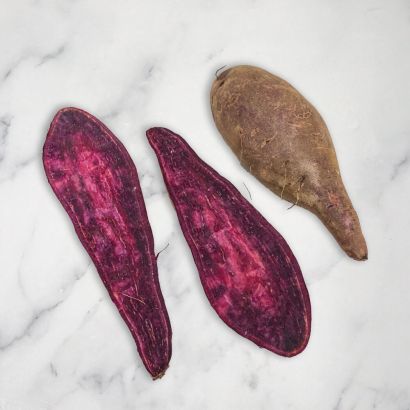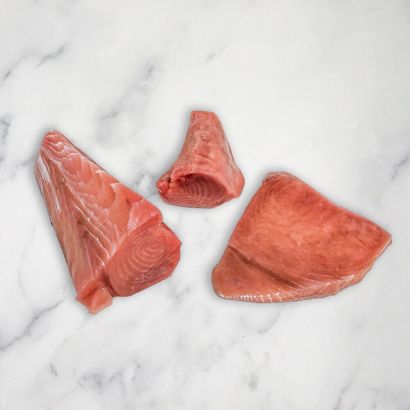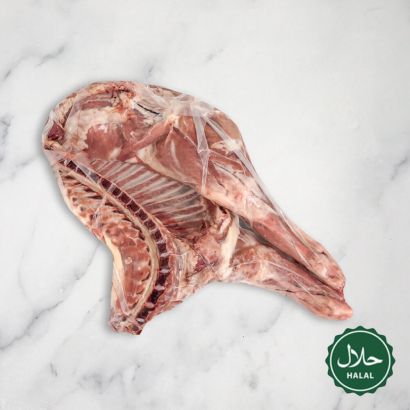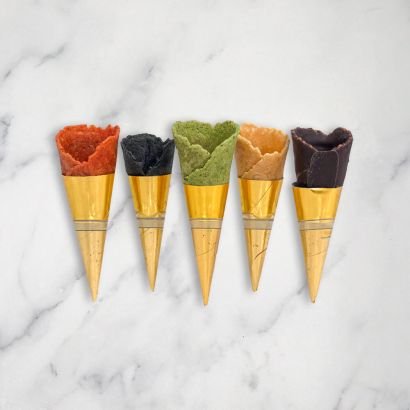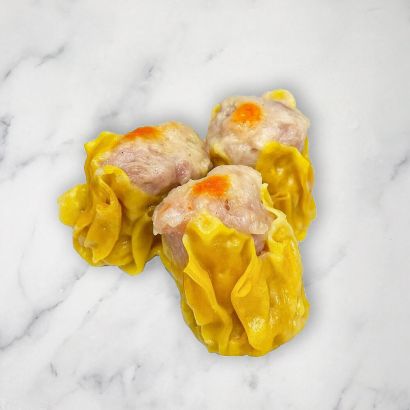 Handmade Siu Mai Pork & Prawn Dumplings, Frozen, 310g (15 pcs)£15.95Indulge in Delight: Handmade Siu Mai Pork & Prawn Dumplings! Embark on a culinary journey that tantalises your taste buds with the exquisite handmade Siu Mai pork & prawn dumplings. Revered as one of the most popular choices in dim sum restaurants, these dumplings are a harmonious blend of ...
Handmade Siu Mai Pork & Prawn Dumplings, Frozen, 310g (15 pcs)£15.95Indulge in Delight: Handmade Siu Mai Pork & Prawn Dumplings! Embark on a culinary journey that tantalises your taste buds with the exquisite handmade Siu Mai pork & prawn dumplings. Revered as one of the most popular choices in dim sum restaurants, these dumplings are a harmonious blend of ...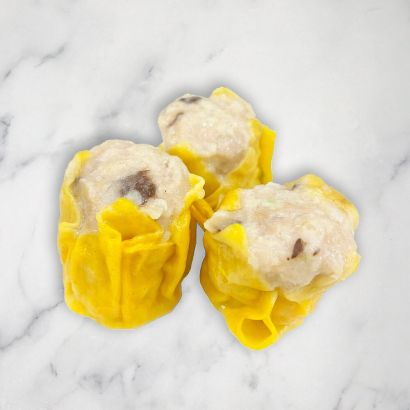 Handmade Chicken Siu Mai, Frozen, 310g (15pcs)£12.95Irresistible Elegance: Chicken Sui Mai! Step into the world of exquisite dumplings with our Chicken Sui Mai – a culinary masterpiece in our dim sum range. These open-top dumplings boast a succulent filling of chicken and shiitake mushrooms, encased in golden wheat flour dumpling paper. A treat fo...
Handmade Chicken Siu Mai, Frozen, 310g (15pcs)£12.95Irresistible Elegance: Chicken Sui Mai! Step into the world of exquisite dumplings with our Chicken Sui Mai – a culinary masterpiece in our dim sum range. These open-top dumplings boast a succulent filling of chicken and shiitake mushrooms, encased in golden wheat flour dumpling paper. A treat fo...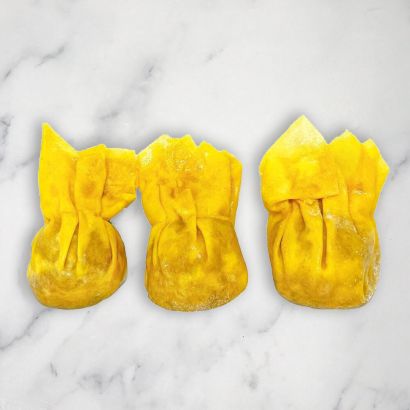 Handmade Prawn & Pork Wontons, Frozen, +/-320g (20pcs)£14.95Savour the Fusion: Handmade Prawn and Pork Wontons! Introducing our handmade prawn and pork wontons, a culinary masterpiece that brings the elegance of dim sum straight to your home. Juicy and delicious, these wontons are a fabulous addition to dim-sum platters or noodle soups, capturing the essenc...
Handmade Prawn & Pork Wontons, Frozen, +/-320g (20pcs)£14.95Savour the Fusion: Handmade Prawn and Pork Wontons! Introducing our handmade prawn and pork wontons, a culinary masterpiece that brings the elegance of dim sum straight to your home. Juicy and delicious, these wontons are a fabulous addition to dim-sum platters or noodle soups, capturing the essenc...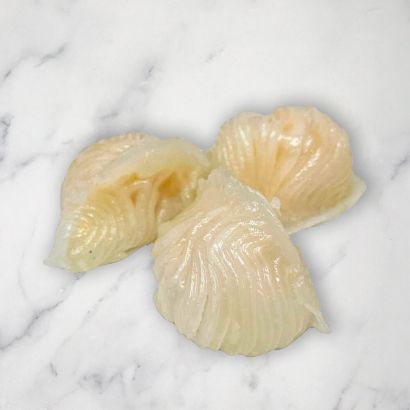 Handmade Prawn Dumpling, Frozen, 400g (16 pcs)£16.95Savour Tradition: Handmade Prawn Dumplings! Journey into the heart of tradition with our handmade prawn dumplings, a timeless favourite in our esteemed dim sum collection. These dumplings embody the essence of simplicity while boasting an explosion of flavour that has made them a cherished staple a...
Handmade Prawn Dumpling, Frozen, 400g (16 pcs)£16.95Savour Tradition: Handmade Prawn Dumplings! Journey into the heart of tradition with our handmade prawn dumplings, a timeless favourite in our esteemed dim sum collection. These dumplings embody the essence of simplicity while boasting an explosion of flavour that has made them a cherished staple a...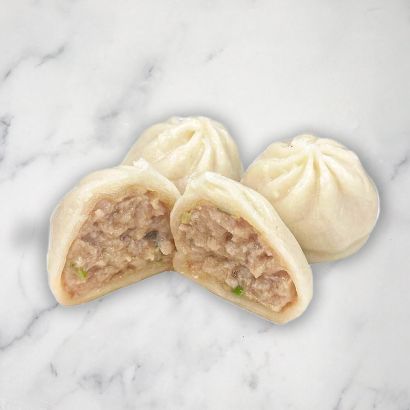 Handmade Pork Siu Loong Buns, Frozen, 350g (15 pcs)£14.95Savour the Tradition: Handmade Pork Siu Loong Buns! Originating from the picturesque Jiangnan region, our handmade pork Siu Loong buns express centuries-old culinary mastery. These Chinese steamed buns, often referred to as 'soup dumplings,' hold a special place in the heart of authentic dim sum cu...
Handmade Pork Siu Loong Buns, Frozen, 350g (15 pcs)£14.95Savour the Tradition: Handmade Pork Siu Loong Buns! Originating from the picturesque Jiangnan region, our handmade pork Siu Loong buns express centuries-old culinary mastery. These Chinese steamed buns, often referred to as 'soup dumplings,' hold a special place in the heart of authentic dim sum cu...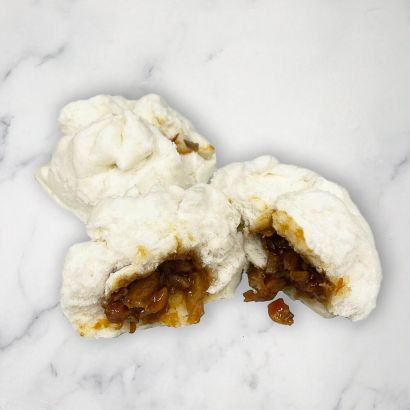 Handmade Char Siu (BBQ Pork) Bun, Frozen, 310g (6 pcs)£10.95Chinese Bakery Charm: Handmade Char Siu (BBQ Pork) Buns! Transport yourself to the enchanting windows of Chinese bakeries with our handmade Char Siu (BBQ Pork) buns – an ode to the classic culinary artistry that has delighted palates for generations. These fluffy, flour buns express the essence o...
Handmade Char Siu (BBQ Pork) Bun, Frozen, 310g (6 pcs)£10.95Chinese Bakery Charm: Handmade Char Siu (BBQ Pork) Buns! Transport yourself to the enchanting windows of Chinese bakeries with our handmade Char Siu (BBQ Pork) buns – an ode to the classic culinary artistry that has delighted palates for generations. These fluffy, flour buns express the essence o...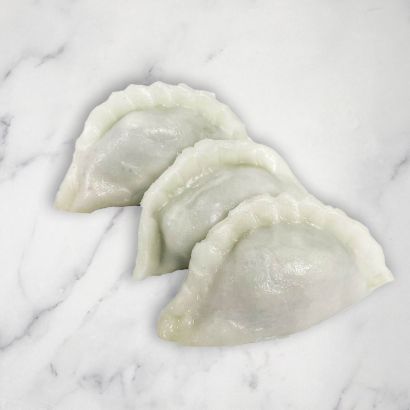 Handmade Prawn & Chive Dumplings, Frozen, 280g (12 pcs)£14.95Harmonious Fusion of Flavors: Handmade Prawn & Chive Dumplings! Embark on a culinary journey that captures the essence of exquisite Chinese cuisine with our handmade prawn & chive dumplings. This delectable creation is a harmonious fusion of prawns, chives, water chestnuts, and bamboo shoot...
Handmade Prawn & Chive Dumplings, Frozen, 280g (12 pcs)£14.95Harmonious Fusion of Flavors: Handmade Prawn & Chive Dumplings! Embark on a culinary journey that captures the essence of exquisite Chinese cuisine with our handmade prawn & chive dumplings. This delectable creation is a harmonious fusion of prawns, chives, water chestnuts, and bamboo shoot...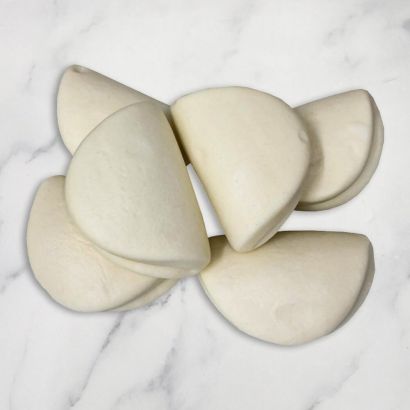 Gua Bao, Frozen, 10 Pieces, 300g£9.95Introducing our delicious and fluffy Gua Bao Buns, the perfect addition to any meal! Made from a soft and tender dough that's been steamed to perfection, these bao buns are a popular staple in Asian cuisine.Gua Bao are easy to prepare and can be enjoyed in a variety of ways. They make a great base f...
Gua Bao, Frozen, 10 Pieces, 300g£9.95Introducing our delicious and fluffy Gua Bao Buns, the perfect addition to any meal! Made from a soft and tender dough that's been steamed to perfection, these bao buns are a popular staple in Asian cuisine.Gua Bao are easy to prepare and can be enjoyed in a variety of ways. They make a great base f...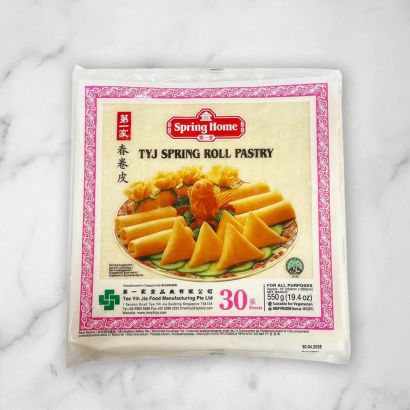 Spring Roll Sheets, Fresh from Frozen, 2 x 30£11.95Spring Roll Sheets: Versatile Wrappers for Culinary Creativity! Elevate your culinary creations with our spring roll sheets, versatile and easy-to-use wrappers that open the door to a world of possibilities. Whether you're a seasoned chef or an aspiring home cook, these pastry sheets are the perfec...
Spring Roll Sheets, Fresh from Frozen, 2 x 30£11.95Spring Roll Sheets: Versatile Wrappers for Culinary Creativity! Elevate your culinary creations with our spring roll sheets, versatile and easy-to-use wrappers that open the door to a world of possibilities. Whether you're a seasoned chef or an aspiring home cook, these pastry sheets are the perfec...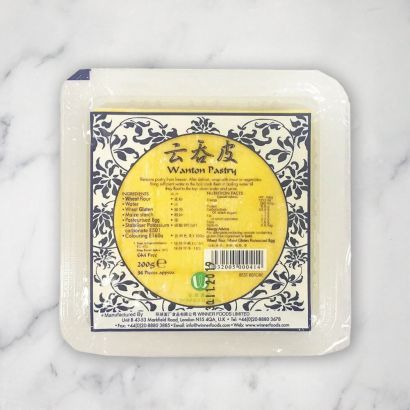 Dumpling Skins, Fresh from Frozen, 3 x 200g£11.95Unleash Culinary Creativity: Dumpling Skins! Embark on a culinary journey with our dumpling skins, an indispensable ingredient for anyone venturing into the world of homemade Asian cuisine. Crafted to perfection, these skins serve as the foundation for creating mouthwatering dumplings, bringing the...Out of stock
Dumpling Skins, Fresh from Frozen, 3 x 200g£11.95Unleash Culinary Creativity: Dumpling Skins! Embark on a culinary journey with our dumpling skins, an indispensable ingredient for anyone venturing into the world of homemade Asian cuisine. Crafted to perfection, these skins serve as the foundation for creating mouthwatering dumplings, bringing the...Out of stock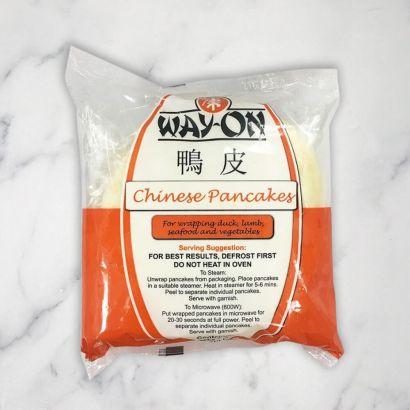 Chinese Pancake Wrappers, Fresh from Frozen, 1.02kg (102 Units)£11.95Introducing Chinese Pancake Wrappers: Perfect for Wrapping Various Fillings! Looking for the ideal pancakes to wrap duck, lamb, seafood or vegetables? Look no further than our Chinese pancake wrappers! These thin, delicate dim sum wrappers provide the perfect canvas for your culinary creations. Whe...Out of stock
Chinese Pancake Wrappers, Fresh from Frozen, 1.02kg (102 Units)£11.95Introducing Chinese Pancake Wrappers: Perfect for Wrapping Various Fillings! Looking for the ideal pancakes to wrap duck, lamb, seafood or vegetables? Look no further than our Chinese pancake wrappers! These thin, delicate dim sum wrappers provide the perfect canvas for your culinary creations. Whe...Out of stock
Discover our tasty selection of dim sum, the popular Chinese appetisers and one of the most sought-after catering products. Typically, they refer to meals such as wontons, prawn dumplings, siu mai, steamed buns and everything in between.
What is Dim Sum?
Dim Sum is a traditional Chinese meal enjoyed as a brunch or breakfast that consists of a variety of appetisers served on small platters with hot tea. Dim sum is usually shared between family members and close friends, where platters are passed around the table so everyone gets a taste of everything. The most popular items on a dim sum menu include dumplings and siu mai (also known as shumai).
Dim sum translates to 'to touch the heart' and there are all kinds of dim sum to provoke such emotion, such as steamed and fried buns, baked dim sum, dumplings and rolls. Dim Sum is commonly associated with the southern regions of China, particularly Hong Kong and Guangdong, but it has become popular worldwide.
Key Features of Dim Sum:
- Small portions: Dim Sum dishes are intentionally small in size, allowing diners to sample a variety of flavors in one sitting.
- Diverse selection: The dim sum menu is extensive and diverse, offering a wide range of options that include dumplings, buns, rolls, pastries, and other bite-sized delicacies.
- Steamed, fried or baked: Dim Sum dishes can be prepared using various cooking methods, including steaming, frying, baking and boiling. Steamed dishes are particularly common and are often served in small bamboo steamer baskets, while fried and baked items offer a crispy texture.
- Tea culture: Dim Sum is commonly enjoyed with tea and the pairing of tea with these small dishes is an integral part of the experience. Tea is often served in small teapots and diners can choose from a variety of Chinese teas to complement the flavours of the dim sum.
- Cultural significance: Dim Sum has cultural significance beyond its culinary appeal. It is often associated with family gatherings, celebrations and special occasions.
Popular Dim Sum Dishes
Dim Sum is not just a meal, it's a cultural experience that brings people together to share delicious, bite-sized delights. It has become a popular and cherished culinary tradition around the world, offering a taste of the rich and diverse flavours of Chinese cuisine.
- Har Gow: Shrimp dumplings with a translucent wrapper.
- Siu Mai: Open-topped dumplings filled with a mixture of ground pork, shrimp and seasonings.
- Char Siu Bao: Steamed buns filled with barbecued pork.
- Cheung Fun: Steamed rice noodle rolls filled with ingredients like shrimp, beef or barbecue pork.
- Egg Tarts: Pastries with a flaky crust filled with sweetened egg custard.
What is Siu Mai?
Siu Mai, also known as Shumai or Shaomai, is a traditional Chinese dumpling that is widely enjoyed in various parts of China and beyond. Siu Mai is loved for its delicious combination of flavours and textures. It is not only a tasty dim sum option but also a symbol of good fortune and prosperity in Chinese culture. The open-top design of Siu Mai, revealing the savoury filling, makes it easily recognizable and a popular choice among those seeking a delightful and savoury bite in Chinese cuisine.
Key Characteristics of Siu Mai:
- Dumpling Wrapper: Siu Mai is typically wrapped in a thin, yellowish dough made from a mixture of wheat starch and tapioca starch. The dough is pleated around the edges but left open at the top, exposing the filling.
- Filling: The filling of Siu Mai is a combination of ground meat and chopped or minced ingredients. The most common filling includes a mixture of ground pork, shrimp and various seasonings. The filling may also include ingredients such as mushrooms, water chestnuts and sometimes even Chinese black truffles for added flavour complexity.
- Topper: One distinctive feature of Siu Mai is the addition of a small, bright orange dot on top. This is often a piece of fish roe or tobiko for a pop of colour and visual appeal.
- Steaming Method: Siu Mai is traditionally steamed, which imparts a tender and juicy texture to the dumplings. The steaming process allows the flavours of the filling to meld while ensuring that the dumpling wrapper remains soft and slightly chewy.
- Dipping Sauce: Siu Mai is commonly served with a dipping sauce. The sauce may vary but often includes a combination of soy sauce, rice vinegar and sometimes chilli oil or other condiments.
What are Bao Buns?
Bao Buns, also known as baozi or simply bao, are a type of steamed or baked Chinese bread roll filled with a variety of ingredients. These soft, pillowy buns have become increasingly popular worldwide and they come in both savoury and sweet varieties.
Key Features of Bao Buns
- Soft and Fluffy Texture: Bao Buns are characterised by their soft, fluffy and slightly sweet texture. The dough is made using ingredients like wheat flour, yeast, sugar and baking powder, resulting in a light and airy bun.
- Steamed or Baked: The buns can be either steamed or baked, depending on the desired texture and flavour. Steamed bao buns have a delicate, moist exterior, while baked versions may have a slightly crisp surface.
- Versatile Fillings: Bao Buns can be filled with a wide range of ingredients, making them versatile and suitable for both savoury and sweet dishes. Common fillings include pork, chicken, beef, vegetables, tofu and even sweet options like red bean paste or custard.
- Serving Styles: Bao Buns are often served in a folded or sandwich-style format. The dough is typically rolled out, filled with the desired ingredients and then folded or pleated to encase the filling. Some variations involve open-faced buns where the filling is exposed at the top.
Popular Types of Bao Buns
Bao Buns have become a popular street food and restaurant item globally, appreciated for their unique combination of textures and flavours. Whether enjoyed as a savoury snack or a sweet treat, these buns offer a delightful culinary experience that showcases the diversity and creativity of Chinese cuisine.
- Char Siu Bao: These buns are filled with tender, barbecued pork (char siu), creating a sweet and savoury combination.
- Gua Bao: Also known as Taiwanese pork belly buns, gua bao features slices of braised pork belly, topped with condiments like pickled mustard greens, crushed peanuts and cilantro.
- Vegetarian Bao: Filled with a medley of vegetables, tofu or mushrooms, providing a delightful vegetarian or vegan option.
- Red Bean Bao: A sweet variation filled with sweet red bean paste, often enjoyed as a dessert.
- Salted Egg Yolk Bao: A modern twist featuring a rich and creamy salted egg yolk filling.
What are Wontons?
Wontons are a type of Chinese dumpling that is typically made by wrapping a thin sheet of dough around a filling. These dumplings are a popular and versatile component of Chinese cuisine and are enjoyed in various forms, including soups and deep-fried appetisers. Wontons come in different shapes, such as simple triangles or more intricate folds, depending on regional variations and personal preferences.
Key Features of Wontons:
- Dough Wrapper: The wrapper for wontons is usually made from a simple mixture of flour, water and sometimes egg. It results in a thin, delicate dough that can be shaped and folded in various ways.
- Versatile Fillings: Wonton fillings can include a wide range of ingredients, providing flexibility for both savoury and sweet variations. Common savoury fillings consist of minced or ground meat (such as pork or shrimp), vegetables and seasonings. Sweet fillings may involve ingredients like red bean paste or sweetened fruits.
- Shapes and Folds: Wontons can be folded in different shapes, with the most basic being a triangle. More intricate folds include the 'flower bud' or 'nurse cap' shapes. The folding technique can vary across different regions and families, contributing to the diverse appearance of wontons.
- Cooking Methods: Wontons are incredibly versatile when it comes to cooking methods. They can be boiled, steamed, deep-fried or added to soups. Boiled or steamed wontons are commonly served with dipping sauces, while deep-fried wontons are often enjoyed as crispy appetisers.
Common Types of Wontons
Wontons are enjoyed not only in China but also in various Asian cuisines, each region adding its unique twists to the preparation and presentation of these versatile dumplings. Whether enjoyed in a comforting soup or as a crispy appetiser, wontons showcase the diversity and creativity found in Chinese culinary traditions.
- Wonton Soup: Wontons are frequently used in soups, where the delicate dumplings are cooked in a flavourful broth alongside ingredients like bok choy, noodles and sometimes additional meat.
- Deep-Fried Wontons: These are crispy wontons that are usually filled with a savoury mixture and then deep-fried until golden brown. They are served as appetisers or snacks and may be accompanied by dipping sauces.
- Steamed Wontons: Delicate and soft, steamed wontons are often filled with a lighter mixture and served with a dipping sauce. They are a healthier alternative to deep-fried wontons.
- Chili Oil Wontons: Boiled wontons served with a spicy chilli oil sauce, offering a flavorful and aromatic dish.
What is Har Gau?
Har Gau, also spelled Ha Gao or Har Gao, is a classic Chinese dim sum dumpling known for its delicate and translucent wrapper and succulent shrimp filling. This dim sum delicacy originated from the Guangdong province of China, particularly associated with Cantonese cuisine. Har Gau is widely popular and often enjoyed in dim sum restaurants around the world.
Key Characteristics of Har Gau:
- Thin and Transparent Wrapper: The hallmark of Har Gau is its thin, nearly translucent wrapper made from a mixture of wheat starch and tapioca starch. This gives the dumpling a slightly chewy texture and allows the diner to see the colourful shrimp filling within.
- Shrimp Filling: The filling of Har Gau primarily consists of fresh shrimp, which are typically minced or chopped and seasoned with ingredients such as soy sauce, sesame oil and sometimes a hint of ginger or garlic. The shrimp filling is known for its sweet and savoury flavour profile.
- Crescent Shape: Har Gau is traditionally shaped into a crescent or half-moon shape, with pleats along the edge. The pleats not only contribute to its aesthetic appeal but also help seal the dumpling during the cooking process.
- Steamed Preparation: Har Gau is commonly steamed, which imparts a tender and juicy texture to both the wrapper and the shrimp filling. Steaming allows the flavours to meld and ensures that the dumplings are not overly heavy.
- Dipping Sauce: Har Gau is typically served with a simple dipping sauce, often a mixture of soy sauce and sometimes a touch of rice vinegar or chilli oil. This adds an extra layer of flavour to the dumplings.

